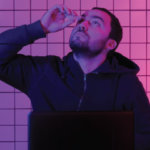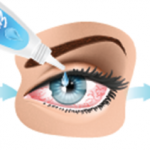Future Treatments
Although treatment developments for Sjögren’s disease have languished for many years, that’s changing.
“This is an exciting time in Sjögren’s,” Ms. Church says. “We’re seeing an increase in research, discovering new things about the disease and demonstrating that it’s much more serious than historically thought.”
That increased research has led to potential treatments, including:
• An eye drop from Iolyx Therapeutics, ILYX-002, geared toward dry eye caused by autoimmune or inflammatory conditions. Phase 2 data on 105 patients found a “meaningful clinical improvement in ocular surface health,” according to the company.7
• TRYPTYR (acoltremon ophthalmic solution) 0.003%, a drop for dry eye approved by the U.S. Food & Drug Administration (FDA) in May. The manufacturer describes it as a “first-in-class TRPM8 receptor agonist (neuromodulator) that stimulates corneal sensory nerves to rapidly increase natural tear production.”8
• Cenegermin, an eye drop that was approved by the FDA for neurotrophic keratitis but is currently being researched for possible use in patients with Sjögren’s disease, Dr. Brocks says.
There also are several phase 2 and phase 3 systemic trials underway for Sjögren’s, Dr. Lakin says.
Systemic treatments may be considered in patients with Sjögren’s disease who have severe dry eye that does not respond to topical management, Dr. Akpek says.
Dr. Meysami and other doctors are taking part in Sjögren’s trials related to dry eye. He will serve as the principal investigator of a study that will offer access to emerging therapies aimed at effectively addressing systemic and glandular manifestations of the disease, including dry eye symptoms.
Additionally, more doctors are getting familiar with the use of PROSE and scleral lenses as they become more accessible—offering other treatment options, according to Dr. Brocks.
From One Specialty to Another
Ophthalomologists share some tips for rheumatologists to keep in mind from an ocular perspective when managing patients with Sjögren’s disease:
• Use preservative-free eye drops and topical cyclosporine or lifitegrast after a baseline exam even with only mild findings. Of course, the referral to an ophthalmologist should still be part of their care, but there could be a delay to securing an appointment. That’s why starting these treatments is still important.
• Find an ophthalomologist in your area who specializes in the cornea/ocular surface, Dr. Brocks advises. Even better, find a specialist who frequently works with patients with Sjögren’s.
“We have a disease that’s been disregarded for so many years,” Ms. Church says. “It’s been misjudged as a nuisance disease. ‘Just put some eye drops in or drink a little more water, and you’ll be fine.’ Of course, we’ve learned that’s not the case. It can be very serious.”

